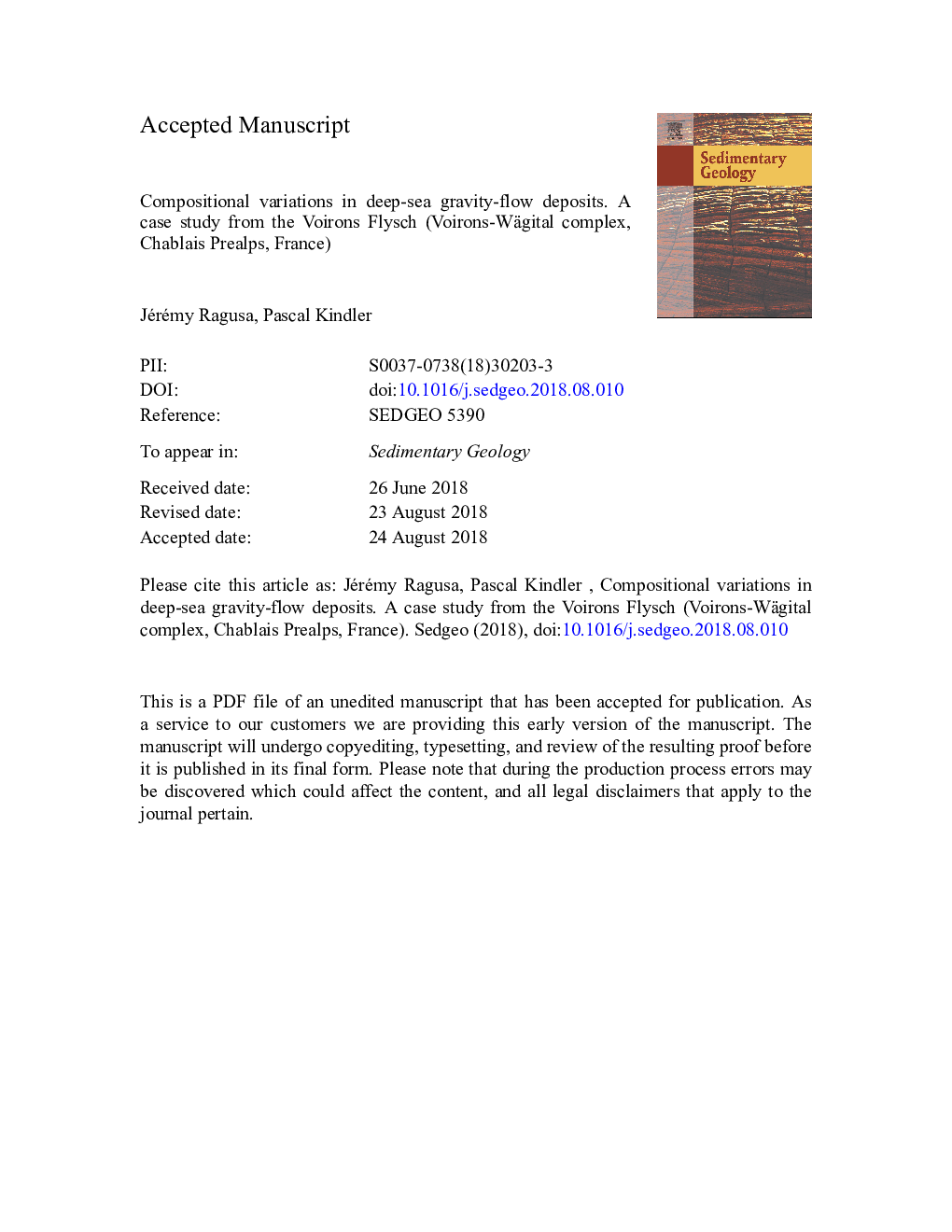| Article ID | Journal | Published Year | Pages | File Type |
|---|---|---|---|---|
| 11024674 | Sedimentary Geology | 2018 | 58 Pages |
Abstract
Grain-size control is frequently invoked to explain the compositional variation of detrital sediments in fluvial sediments. A similar possibility is here investigated in the fossil deep-sea gravity-flow deposits from the Voirons Flysch (Voirons-Wägital complex, Chablais Prealps). About 270 samples of diverse depositional settings were analysed using the framework composition, including cement and porosity, Mutti facies and grain-size measurements. Six lithofacies have been identified from cluster analysis. They correspond to channel (L1 to L3) and lobe (L4 and L5) depositional settings and to reworked turbidites (L6). Our results emphasize the close relationship between petrography and grain-size which alters the detrital signal from extrabasinal sources. The abundant polycrystalline component of proximal deposits is progressively removed while skeletal grains and additional intrabasinal grains become more abundant in distal deposits. Alongside, porosity is reduced by the simultaneous increase of cement which constrains subsequent diagenetic modifications. Hence, proximal depositional settings keep most of the inherited signal from extrabasinal sources whereas distal deposits will be homogenised. When plotted in provenance-analysis diagrams, the successive depositional settings show distinct fields possibly corresponding to different tectonic settings of the Dickinson model. This compositional variation thus creates a bias in provenance interpretation resulting from both grain-size control and flow mechanisms. Finally, our results emphasize that petrographic data must be handled with care in provenance analyses, especially when comparing various deep-sea gravity flow systems with different grain-size ranges.
Related Topics
Physical Sciences and Engineering
Earth and Planetary Sciences
Earth-Surface Processes
Authors
Jérémy Ragusa, Pascal Kindler,
